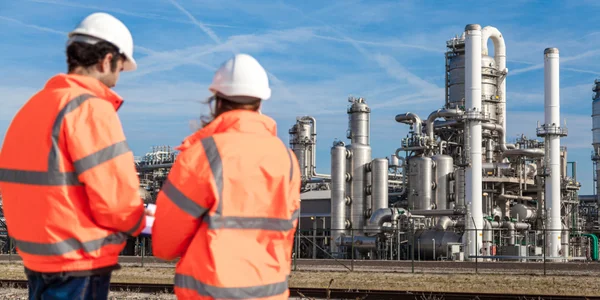Multi Cyclone Dust Collector
- Electrostatic Precipitators
- Reverse Air Bag Houses
- Fabric filters
- Hybrid electro filters
- Flue Gas Desulphurization
- Forced draught cooler
- Scrubbers
- Gas cleaning plants
- Cyclones
- Multiclones
- VOC + Odour removal system
- Dust extraction system
- Fumes extraction system
- Explosion protection devices
- Fans and blowers
- Waste water treatment
- Air to Air Heat Exchanger
Offices
HEADQUARTER

Germany
-
Intensiv Filter Himenviro Technologies GmbH
Neustraße 45 - 49, 42553, Velbert, Deutschland/Germany - +49 20534200990
REGIONAL OFFICE

Great Britain
-
Intensiv Filter Himenviro UK Limited
47, Bath Street WS13BX, Wallsall West Midlands, Great Britain - +44 1922 628893
REGIONAL OFFICE

United Arab Emirates
-
Intensive Filter Himenviro Technologies FZE – LLC
Business Centre, Sharjah Publishing City Free Zone, Sharjah, UAE - +971-556074697
REGIONAL OFFICE

India
-
Intensiv-Filter Himenviro Private Limited
D-247/11, Sector-63, Noida - 201301, Uttar Pradesh, India - +91-120-4642-500
REGIONAL OFFICE




India
-
Intensiv-Filter Himenviro Private Limited
D-247/11, Sector-63, Noida - 201301, Uttar Pradesh, India - +91-120-4642-500
REGIONAL OFFICE




India
-
Intensiv-Filter Himenviro Private Limited
D-247/11, Sector-63, Noida - 201301, Uttar Pradesh, India - +91-120-4642-500
Multi-Clone Dust Collection System For Industry
After the cyclone, the multi-clone dust collection system is a mechanical dust collector. Inside the chamber, it has a number of parallel cyclonic tubes that separate the heavy dust particles from the air stream. This functions as a primary spark trapper in some applications as well as a primary separator to lessen the dust load on the bag filter or dust collector.
Cast iron collecting tubes used in the Multi clone dust collector last longer than tubes made of other materials. For applications involving high temperatures or significant erosion, special alloy collecting tubes and vanes are offered.
Features Of Our Multi-Clone Dust Collection System
- No Moving Or Rotating Parts so No Maintenance
- Different Tube Design For Different Applications
- Comprehensive Experience in Product Selection
- Low Operating Pressure Drops
- Replaceable Fabricated/Cast Alloy Tubes to form Multiclone
- Inlet centrifugal blower gives maximum cyclonic effect
- Heavy-duty construction
- Higher Dust separation efficiency
- Replaceable tubes may be Cast Alloy/ Steel fabricated
- Inspection door for easy access for maintenance
- Fitted with a rotary valve for continuous operation
Application
Applications of Multiclones
- Fertilizer Industry: Phosphate Rock Dryers & Calciners, Dryers
- Non-Ferrous: Copper Reverberatory Furnace, Laea Blast Furnace
- Pulp & Paper: Lime Kilns, Back Liquor Recovery, Bark Boilers
- Sugar Industry: Boiler Flue Gas, Bagging Section
- Mineral Products: Asphalt Stone Dryers, Cement Kilns
- Pharmaceuticals: Tablet Coating Fans, etc
- Steel Industry: Blast Furnace, Electric Arc Furnace, BOF, etc


Process
Our Services
Case Study
Frequently Asked Questions
1. What is a multi-cyclone dust collector?
A multi-cyclone dust collector is a device that cleans air by removing dust particles. It contains many small cyclones working together to capture dust from the air. This system is more efficient than single cyclones because the smaller cyclones create greater centrifugal force, improving dust separation.
2. How does a multi-cyclone dust collector work?
A multi-cyclone dust collector works by using multiple small cyclones to spin the incoming dusty air. The spinning motion forces heavier dust particles to move outward toward the cyclone walls, where they lose speed and fall into a collection area. The cleaned air then moves upward through the center of the cyclones and exits the collector.
3. What are the benefits of using a multi-cyclone dust collector?
Using a multi-cyclone dust collector offers several benefits:
- High Efficiency: It effectively captures fine dust particles, improving air quality.
- Durability: With no moving parts, it requires minimal maintenance and has a long service life.
- Space-Saving Design: Its compact size makes it suitable for facilities with limited space.
- Cost-Effective: It operates without the need for filters, reducing replacement costs.
4. In which industries are multi-cyclone dust collectors commonly used?
Multi-cyclone dust collectors are commonly used in industries such as:
- Woodworking: To capture sawdust and wood particles.
- Cement Plants: For removing cement dust from the air.
- Steel Mills: To collect metallic dust and particles.
- Food Processing: To maintain clean air by removing food dust particles.
Pharmaceuticals: To ensure air purity by capturing fine dust during production.
5. How efficient are multi-cyclone dust collectors in removing dust particles?
Multi-cyclone dust collectors are highly efficient, capable of capturing particles as small as 5 microns with commendable efficiency. Their design, featuring multiple small cyclones, enhances their ability to separate a broad spectrum of particle sizes, making them suitable for industries requiring rigorous dust control.
6. What factors can affect the performance of a multi-cyclone dust collector?
Several factors can affect the performance of a multi-cyclone dust collector:
- Cyclone Quantity: More cyclones can lead to better dust separation.
- Gas Flow Distribution: Evenly distributed gas flow ensures optimal performance.
- Pressure Drop: Higher resistance to gas flow can reduce efficiency; managing energy consumption is vital.
7. How does a multi-cyclone dust collector compare to a single cyclone separator?
A multi-cyclone dust collector is generally more efficient than a single cyclone separator. The multiple smaller cyclones in a multi-cyclone system create greater centrifugal force, leading to better separation of dust particles, especially finer ones. This design also allows for handling larger volumes of air while maintaining high efficiency.
8. What maintenance is required for a multi-cyclone dust collector?
Maintenance for a multi-cyclone dust collector is minimal due to the lack of moving parts. Regular inspections should be conducted to check for wear or blockages, especially in the cyclone inlets and dust discharge areas. Ensuring that seals are intact and that collected dust is removed promptly will help maintain optimal performance.
9. Can a multi-cyclone dust collector handle high-temperature gases?
Yes, a multi-cyclone dust collector can handle high-temperature gases. They are designed to operate at high temperatures, making them suitable for processes involving hot gases, such as those in cement kilns or metal smelting operations. Special materials and designs can be used to accommodate specific temperature requirements.
10. Are multi-cyclone dust collectors suitable for capturing very fine dust particles?
Multi-cyclone dust collectors are effective at capturing fine dust particles, typically down to 5 microns in size. However, for extremely fine particles, additional filtration methods, such as fabric filters or electrostatic precipitators, may be used in conjunction with multi-cyclone systems to achieve higher efficiency.








